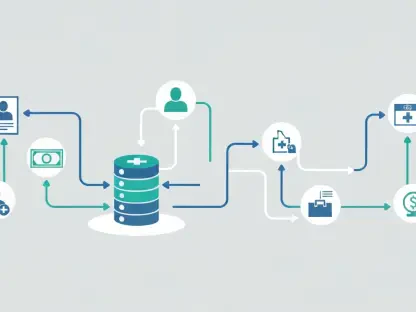The Role of SOC as a Service in DevSecOps: Enhancing Security in Continuous Integration
In an age where cyber threats evolve at a breakneck pace and software development cycles have become increasingly rapid, embedding security within every phase of software development has never been more critical. Integrating Security Operations Center as a Service (SOCaaS) into DevSecOps can significantly improve software security during development, and the principle of “shift left” is thoroughly emphasized. This approach ensures that potential vulnerabilities are addressed at the earliest stages, rather than being relegated to the final phases.
Understanding DevSecOps
DevSecOps: Integrating Security into Development and Operations
DevSecOps merges development, security, and operations into a unified, collaborative process aimed at integrating security as a shared responsibility throughout the entire software lifecycle. This methodology transforms the traditional siloed approach where security checks and audits occurred post-development into a continuous, integrated process. In this dynamic setup, every team member, from developers to system administrators, is accountable for security, leading to more resilient applications.
The primary objective of DevSecOps is to embed robust security mechanisms directly into CI/CD pipelines. By doing so, security checks and validations become automated, enabling real-time detection and resolution of vulnerabilities. This method leverages a combination of tools, cultural shifts, and best practices to ensure that security principles are seamlessly woven into the daily workflow. Consequently, this mitigates risks that might otherwise become exponential as software progresses through the pipeline.
The Essence of “Shift Left” in Security Practices
The “shift left” principle in software development stresses incorporating security from the earliest stages. This paradigm shift ensures that security considerations are not limited to post-deployment audits but are integral from the outset. By addressing potential vulnerabilities during the initial code writing and design phases, developers can identify and resolve issues faster, reducing the complexity and cost of fixing them later.
The integration of security early in the development cycle achieves multiple objectives, including a significant reduction in potential attack surfaces, early detection of bugs, and fostering a culture of vigilance among developers. This proactive approach not only accelerates the development process by minimizing security bottlenecks but also ensures higher software quality and resilience. The “shift left” concept, therefore, is pivotal in addressing the immediate and future challenges posed by cyber threats in a holistic manner.
Benefits of SOCaaS in DevSecOps
Continuous Security Monitoring Through SOCaaS
One of the pivotal advantages of integrating SOCaaS within the DevSecOps framework lies in the provision of continuous security monitoring. Modern software development practices, characterized by fast-paced release cycles, necessitate real-time, around-the-clock surveillance to detect and mitigate threats as they emerge. SOCaaS leverages advanced analytics and machine learning to provide this continuous oversight, significantly enhancing the ability to detect threats early.
The real-time threat detection capability of SOCaaS empowers development and security teams to respond promptly to vulnerabilities and incidents. This proactive stance not only mitigates the risks but also ensures minimal disruptions to the development process. Moreover, the use of machine learning allows SOCaaS to adapt to and recognize new patterns of threats, continually improving the accuracy and efficacy of its monitoring mechanisms. This integration ensures that security is maintained as a continuous, dynamic process rather than a static, periodic check.
Automated Compliance and Policy Enforcement
Another substantial benefit of SOCaaS within the DevSecOps model is automated compliance and policy enforcement. SOCaaS integrates seamlessly with CI/CD tools to ensure that security policies and industry-specific regulatory requirements are consistently applied throughout the development process. Automated compliance checks enable the immediate identification and remediation of policy violations, reducing the risk of deploying insecure code.
For organizations, especially those operating in heavily regulated sectors, maintaining compliance is critical. SOCaaS can streamline this process by embedding compliance checks and policy enforcement directly into the development pipelines. By ensuring that each code iteration adheres to predefined security policies, SOCaaS minimizes vulnerabilities and reduces the likelihood of potential compliance breaches. This automated approach not only boosts efficiency but also instills confidence that all regulatory obligations are being met without additional manual oversight.
Enhancing Incident Response with SOCaaS
Expertise and Rapid Response Capabilities
Enhancing incident response capabilities is another significant advantage of incorporating SOCaaS into DevSecOps, especially for smaller organizations with limited cybersecurity resources. SOCaaS providers offer specialized expertise and rapid response mechanisms that address security incidents efficiently and effectively. This ensures that any identified threats or breaches are managed swiftly, limiting their impact on ongoing development processes.
The expertise offered by SOCaaS providers brings substantial value to companies regardless of their size. Smaller organizations, in particular, benefit from the high level of specialized knowledge without the need for substantial in-house investments. The rapid response capabilities of SOCaaS allow for swift containment and remediation, minimizing potential damage. Additionally, this expertise helps develop and refine incident response plans that are tailored to the unique needs and operations of the organization, further enhancing overall security posture.
Scalability and Flexibility of SOCaaS
SOCaaS offers remarkable scalability and flexibility, aligning perfectly with the dynamic nature of modern development environments. This capability ensures that security monitoring and response mechanisms can scale in tandem with the growth and complexities of development projects. Unlike traditional on-premises security infrastructures, SOCaaS can be scaled up or down without significant investment in physical infrastructure, allowing for cost-effective security solutions.
The flexibility provided by SOCaaS means it can adapt to varying workload demands and evolving security requirements. This adaptability is crucial as development projects progress from small-scale initiatives to large, complex deployments. SOCaaS can dynamically adjust its monitoring capabilities, ensuring comprehensive coverage across all phases of development. This scalability, coupled with the flexibility to integrate with various development tools and processes, makes SOCaaS an invaluable component in maintaining robust security in ever-changing development landscapes.
Secure Code Practices with SOCaaS
Security Feedback During Code Reviews
Security in code is an essential aspect that SOCaaS can significantly enhance through continuous feedback during code reviews. By integrating SOCaaS into the development process, developers receive timely security insights and recommendations directly within their workflow. This integration occurs at critical junctures, such as pull request evaluations, enabling developers to identify and address security issues early in the development cycle.
This continuous feedback loop fosters a culture of security mindfulness among developers, encouraging them to consider potential vulnerabilities as they write and review code. By flagging issues at the pull request level, SOCaaS ensures that security flaws are addressed before they are integrated into the main codebase. This proactive approach not only improves the quality of the software but also illustrates the importance of incorporating security as an intrinsic element of the development process rather than an afterthought.
Threat Intelligence and Security Insights
SOCaaS providers bring extensive threat intelligence and security insights that serve as valuable resources for development teams. These insights inform developers about current attack vectors, emerging threats, and best practices for building resilient applications. Access to this information allows development teams to stay ahead of potential risks and incorporate advanced security measures into their projects.
The deployment of threat intelligence provided by SOCaaS empowers organizations to anticipate and mitigate future vulnerabilities. By understanding the landscape of current threats, developers can make informed decisions and apply appropriate security controls. This knowledge extends beyond reactive measures, enabling a proactive stance on security that continuously evolves with emerging threats. Additionally, the continuous stream of security insights helps in refining development strategies and building software that can withstand sophisticated cyberattacks.
Challenges in Integrating SOCaaS into DevSecOps
Complexity of Tool Integration
Despite its numerous advantages, integrating SOCaaS into DevSecOps is not without challenges. One significant hurdle is the complexity of tool integration. Many organizations already have established CI/CD pipelines and workflows that rely on a myriad of tools and technologies. Integrating SOCaaS into these existing frameworks can be a complex task, requiring meticulous planning and execution to ensure seamless operation without disruptions.
Organizations must often reconfigure their pipelines to accommodate the new security tools provided by SOCaaS. This reconfiguration involves overcoming potential compatibility issues, ensuring smooth communication between tools, and maintaining efficiency. The complexity of tool integration often necessitates in-depth technical expertise and a thorough understanding of both the existing and new systems. Despite these challenges, the long-term benefits of enhanced security and streamlined processes make the effort worthwhile.
Cultural Shift to Make Security Everyone’s Responsibility
Another challenge lies in fostering a cultural shift that makes security everyone’s responsibility. DevSecOps advocates for a collaborative approach where all team members, regardless of their primary role, are accountable for security. However, instilling this mindset across development, operations, and other teams can be challenging and necessitates a comprehensive transformation of organizational culture.
This cultural shift requires significant educational efforts and often a change in traditional workflows. Employees need to be trained on the importance of security and how their specific roles contribute to the overall security posture of the organization. Encouraging cross-functional collaboration and dialogue is essential for breaking down silos and building a unified approach to security. While this transformation can be challenging, it is crucial for achieving the full potential of the DevSecOps model and ensuring comprehensive security integration.
Conclusion
In an era where cyber threats develop at lightning speed and software development cycles are faster than ever, embedding security into every phase of software development is crucial. Incorporating Security Operations Center as a Service (SOCaaS) into DevSecOps can drastically enhance software security throughout the development process. The “shift left” principle is a key aspect of this integration. This approach focuses on identifying and addressing potential security vulnerabilities at the earliest stages of development instead of waiting until the final phases. Shifting security measures to the left ensures that fixes and enhancements can be made when they are less costly and easier to implement. This proactive strategy not only saves time and resources but also builds more robust and secure software from the get-go. SOCaaS in a DevSecOps model allows continuous monitoring and real-time threat detection, making it possible to respond to vulnerabilities as they arise. By weaving security into the fabric of development, organizations can produce software that is resilient against cyber threats from the outset.









